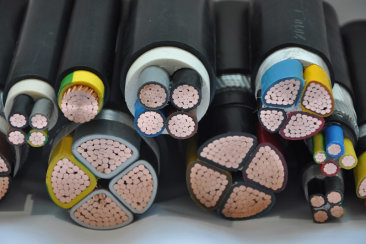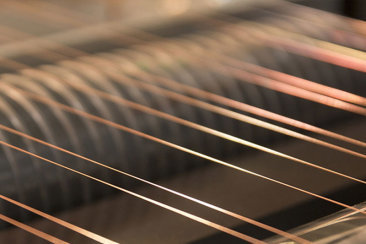How to choose heat-resistant and high-temperature wires and cables
Release time:
2023-08-28
Generally, wires and cables are insulated with plastic and rubber sheaths, which are conventional engineering materials with abundant sources and can meet large-scale production, and the cost is relatively low. However, for some special industries such as petrochemicals, steel, aerospace, shipbuilding, military industry, pharmaceuticals, food, plastic machinery, boilers, and other industries related to heat and high temperature, wires and cables that can withstand certain high temperatures are required. Ordinary wires and cables are obviously not suitable for use, and wires and cables that can withstand high temperatures are needed to ensure the safe operation of their power and signals. With the rapid development of China's economy, the demand for high-temperature cables in the special industry has shown a rapid growth stage. Heat resistant and high-temperature cables grow at a rate of 20% annually. As an important component of special cables, high-temperature cables have strong vitality and supply is in short supply. China imports about 2 billion yuan from abroad every year for domestic construction. The International Electrotechnical Commission (IEC) generally defines the heat resistance level of insulation as follows: Heat resistance grade YAEBFHC *High allowable working temperature/℃ 90105120130155180 ≥ 180 The insulation and sheath of our ordinary wires and cables are made of ordinary engineering rubber and plastic as basic resins, but the requirement is insulation grade. Common rubber materials used for cables include butadiene rubber, ethylene propylene rubber, natural rubber, and chlorosulfonated polyethylene, with a working temperature of (60-75) ℃; Common plastic materials used for cables include polyvinyl chloride, polyethylene (including cross-linked polyethylene), and polypropylene, with a working temperature of (70-90) ℃. It can be seen that these cables are not strictly heat-resistant or high-temperature cables. Heat resistant cables generally refer to cables with temperatures ranging from 90 to 155 ℃ and below, while high-temperature cables refer to cables with temperatures ranging from 180 ℃ and above. To solve the problem of ordinary cables not being able to withstand high temperatures, it is necessary to improve the materials or use insulation grade materials that can withstand high temperatures.

Generally, wires and cables are insulated with plastic and rubber sheaths, which are conventional engineering materials with abundant sources and can meet large-scale production, and the cost is relatively low. However, for some special industries such as petrochemicals, steel, aerospace, shipbuilding, military industry, pharmaceuticals, food, plastic machinery, boilers, and other industries related to heat and high temperature, wires and cables that can withstand certain high temperatures are required. Ordinary wires and cables are obviously not suitable for use, and wires and cables that can withstand high temperatures are needed to ensure the safe operation of their power and signals. With the rapid development of China's economy, the demand for high-temperature cables in the special industry has shown a rapid growth stage. Heat resistant and high-temperature cables grow at a rate of 20% annually. As an important component of special cables, high-temperature cables have strong vitality and supply is in short supply. China imports about 2 billion yuan from abroad every year for domestic construction. The International Electrotechnical Commission (IEC) generally defines the heat resistance level of insulation as follows:
Heat resistance grade YAEBFHC
*High allowable working temperature/℃ 90105120130155180 ≥ 180
The insulation and sheath of our ordinary wires and cables are made of ordinary engineering rubber and plastic as basic resins, but the requirement is insulation grade. Common rubber materials used for cables include butadiene rubber, ethylene propylene rubber, natural rubber, and chlorosulfonated polyethylene, with a working temperature of (60-75) ℃; Common plastic materials used for cables include polyvinyl chloride, polyethylene (including cross-linked polyethylene), and polypropylene, with a working temperature of (70-90) ℃. It can be seen that these cables are not strictly heat-resistant or high-temperature cables.
Heat resistant cables generally refer to cables with temperatures ranging from 90 to 155 ℃ and below, while high-temperature cables refer to cables with temperatures ranging from 180 ℃ and above. To solve the problem of ordinary cables not being able to withstand high temperatures, it is necessary to improve the materials or use insulation grade materials that can withstand high temperatures.
Previous article






